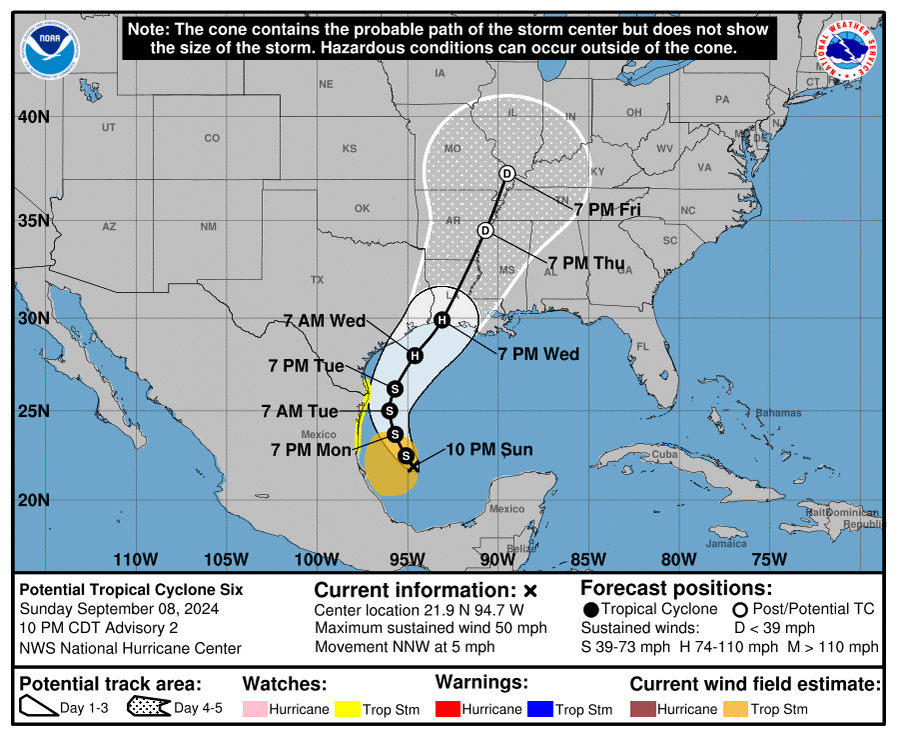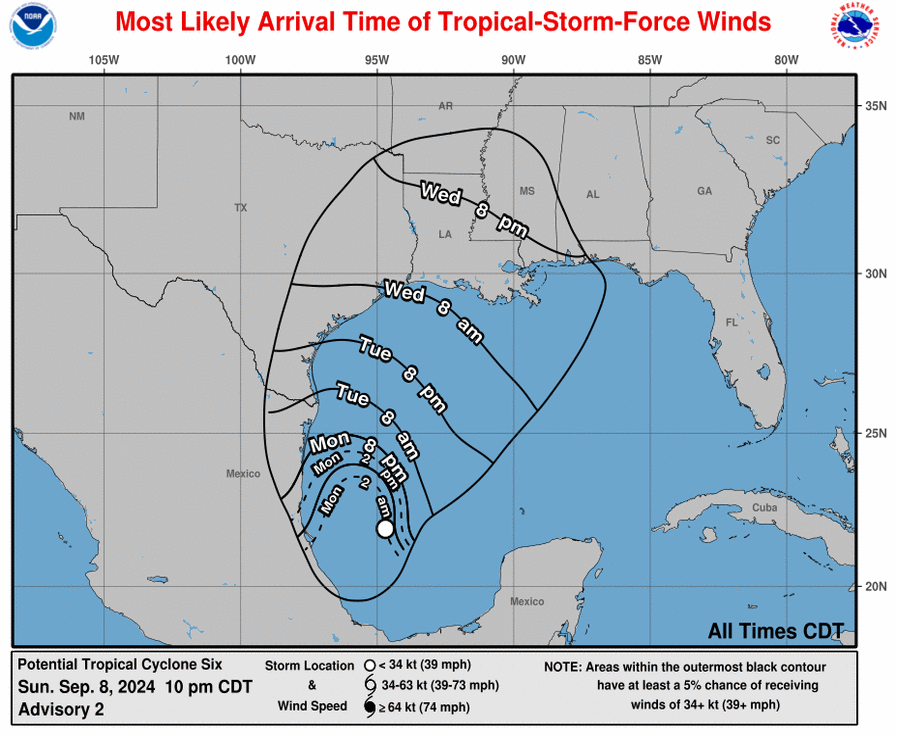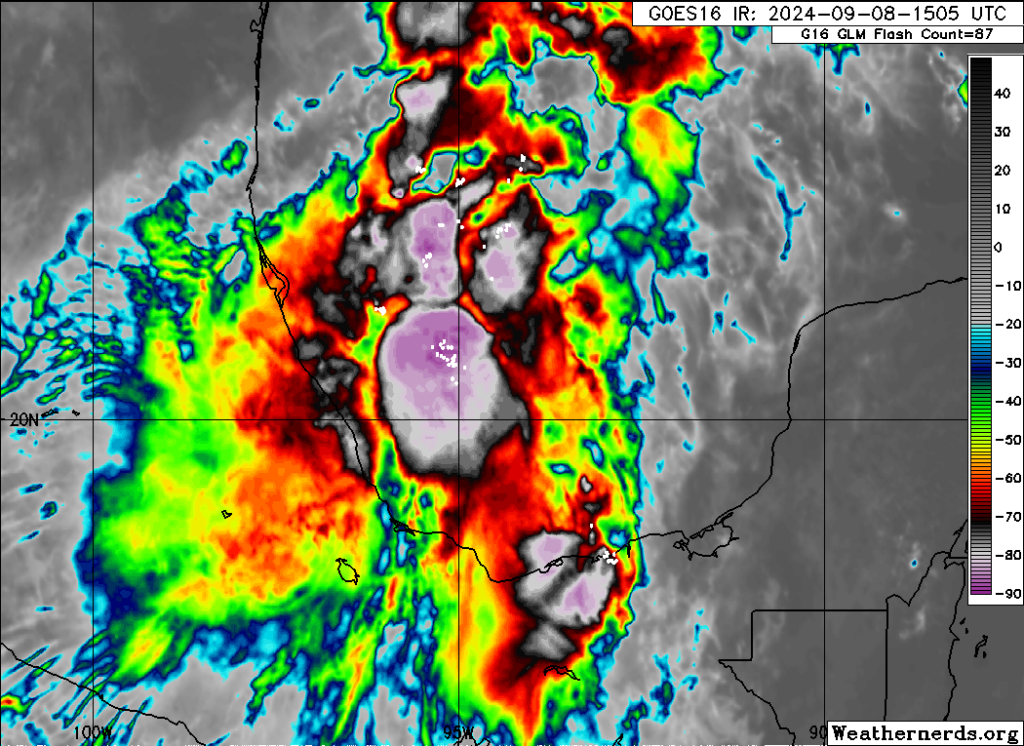In brief: Francine has rapidly developed on Monday and is nearing hurricane strength. In terms of a track forecast, it still appears as though the tropical system will remain far enough off the Texas coast to spare the Houston region of significant impacts. We’ll continue to watch things closely, however.
Francine status
As of 4 pm CT, Tropical Storm Francine is nearing hurricane strength, with 65-mph sustained winds, according to the National Hurricane Center. The storm’s central pressure is dropping, and further intensification is likely. Francine is moving to the north-northwest at 7 mph, and is about 150 miles to the south-southeast of the mouth of the Rio Grande River. Francine has developed an eye this afternoon, which can be seen in satellite images and on the Brownsville radar.
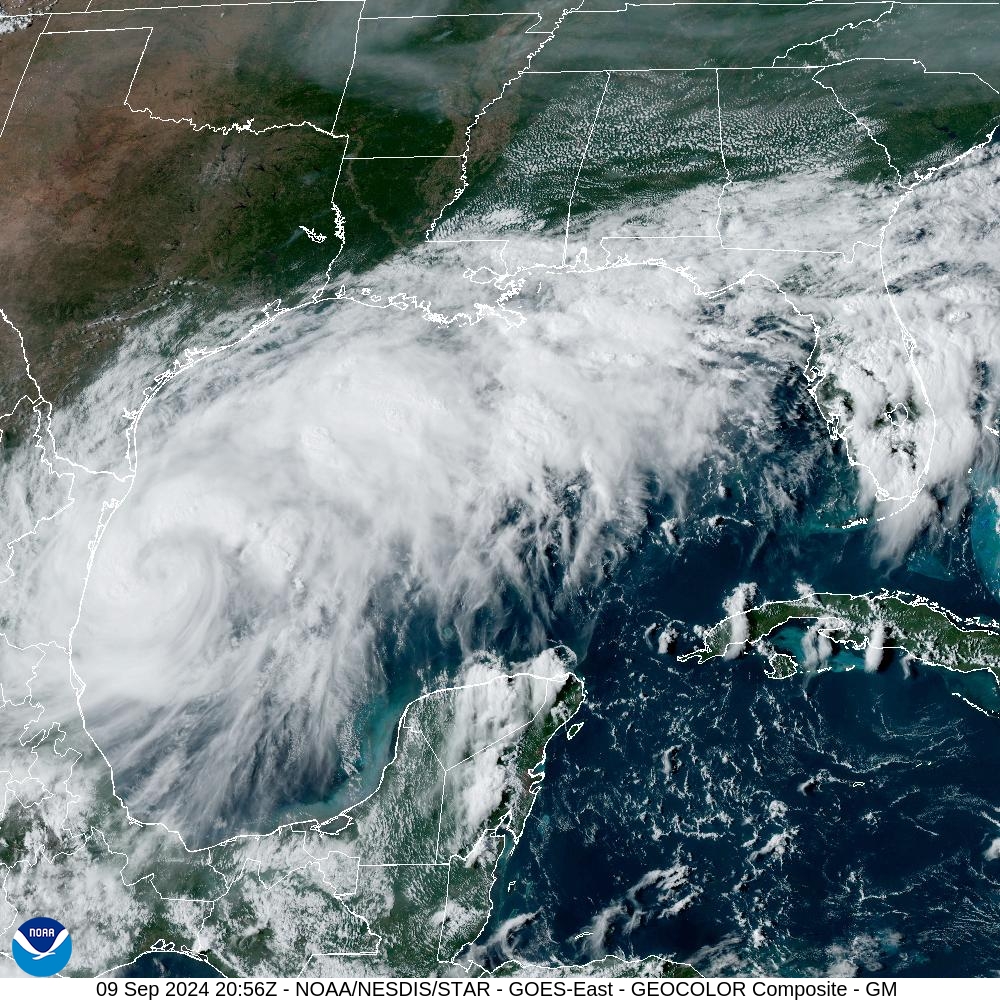
Francine track and intensity
The general forecast for Francine has not changed. The storm is expected to continue moving mostly to the north today and tonight, before making a turn to the northeast on Tuesday. This will essentially allow the storm to track along the contour of the Texas coast, but remain far enough offshore to preclude significant and consequential impacts in terms of rains, winds, and storm surge for most of the upper Texas coast.
By Wednesday evening or night, Francine is expected to reach the southern Louisiana coast, perhaps near Vermillion Bay. It is likely to be a hurricane at landfall on Wednesday afternoon or evening when it comes ashore in southern Louisiana.

Houston impacts
Based upon the latest high resolution modeling, we could start to see some rain bands from Francine moving into Galveston Island and other coastal regions by around mid-morning on Tuesday. My sense is that the vast majority of the region along and inland of Highway 59/Interstate 69 is not going to see much precipitation from this storm, probably 1 inch or considerably less.
Coastal areas have the potential for more, but at this time I would consider the accumulation forecast shown below as a reasonable worst-case scenario. We do not anticipate significant street flooding at this time. Rain is most likely from Tuesday morning through Wednesday morning, after which chances should rapidly diminish.
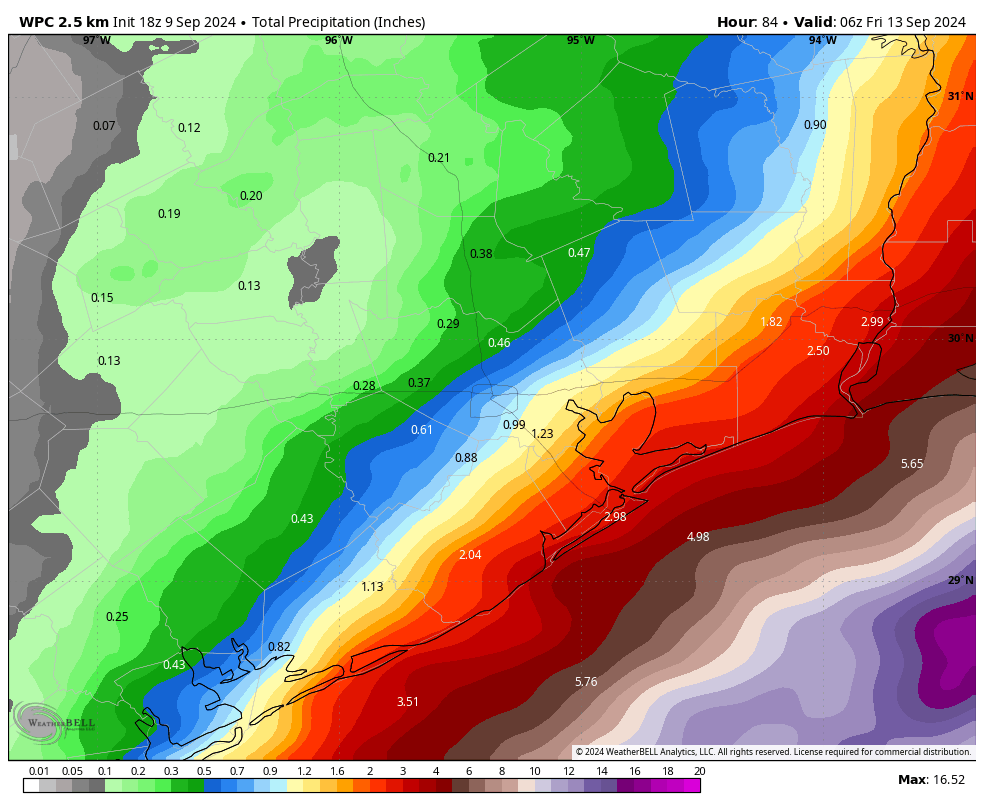
In terms of winds, I expect gusty winds on Tuesday, but nothing wild. Most of the area, including the coast, probably will see some gusts of 20 mph or above. Winds will pick up Tuesday evening and during the overnight hours, but I think the upper limit is sustained winds of about 40 mph right along the coast, with gusts of perhaps 50 mph. (Winds will be noticeably less inland). These kinds of winds should not be enough to provoke significant issues, although some isolated power issues along the coast cannot be ruled out.
Seas will rise 1 to 3 feet above normal at high tide, so only very low-lying areas should see issues on Tuesday night and Wednesday.
All in all, we continue to believe that Francine will be a manageable storm for most of Houston.
We’ll continue to monitor the situation closely, and if anything changes we’ll have an update later tonight—given the angst and interest out there, we might update this evening regardless. If not, we’ll see you first thing on Tuesday morning.




